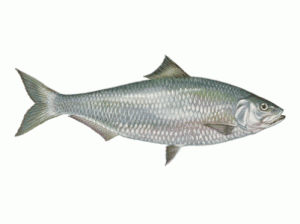
A joint effort by Massachusetts Division of Fisheries and Wildlife (MassWildlife) and the UMass Cooperative Fish and Wildlife Research Unit will conduct fish surveys in rivers at current and former dam locations.
Nearly 50 rivers have been surveyed as part of a broader project to more fully understand the impacts of dams and dam removals on fish and aquatic invertebrates.
Coldwater fish like native eastern brook trout are particularly dependent on upstream and downstream movements for reproduction and survival.
Previous research suggests that abundances of coldwater and coolwater fish, including brook trout, longnose dace, and white suckers, increase following dam removals.
MassWildlife and the U.S. Fish and Wildlife Service (USFWS) recently completed a third year of cooperatively monitoring juvenile American shad in the Connecticut River. Abundance, length, and weight measurements are collected and used to assess the growth, survival, and productivity of the population.
This study is designed to help determine the impacts of dams on juvenile shad. Shad populations have significantly declined as a result of 19th century dam construction, which prevent adults from migrating upriver to find spawning habitat.
Shad are an abundant food source for smallmouth and largemouth bass, walleye, perch, and northern pike. Shad also provide food for birds and terrestrial mammals, as well as marine fish including striped bass.
While surveying the river, biologists captured an array of species in addition to shad. Notable catches included a 25” walleye, 35” carp, and 19” smallmouth bass.
source: Massachusetts Division of Fisheries and Wildlife